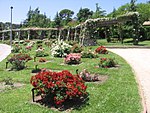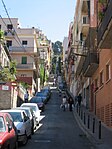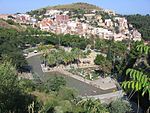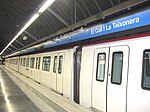Gaudí House Museum
Antoni GaudíArt museums and galleries in CataloniaBiographical museums in SpainDesign museumsHistoric house museums in Spain ... and 2 more
Museums devoted to one artistMuseums in Barcelona

The Gaudí House Museum (Catalan: Casa Museu Gaudí), located within the Park Güell in Barcelona, is a historic home museum that houses a collection of furniture and objects designed by the Spanish architect Antoni Gaudí. It was the residence of Antoni Gaudí for almost 20 years, from 1906 till the end of 1925. On 28 September 1963 it opened as a historic home museum.
Excerpt from the Wikipedia article Gaudí House Museum (License: CC BY-SA 3.0, Authors, Images).Gaudí House Museum
Carrer de Larrard, Barcelona
Geographical coordinates (GPS) Address Website Nearby Places Show on map
Geographical coordinates (GPS)
| Latitude | Longitude |
|---|---|
| N 41.41355 ° | E 2.1521611111111 ° |
Address
Escola Baldiri Reixac
Carrer de Larrard
08001 Barcelona (Gràcia)
Catalonia, Spain
Open on Google Maps










